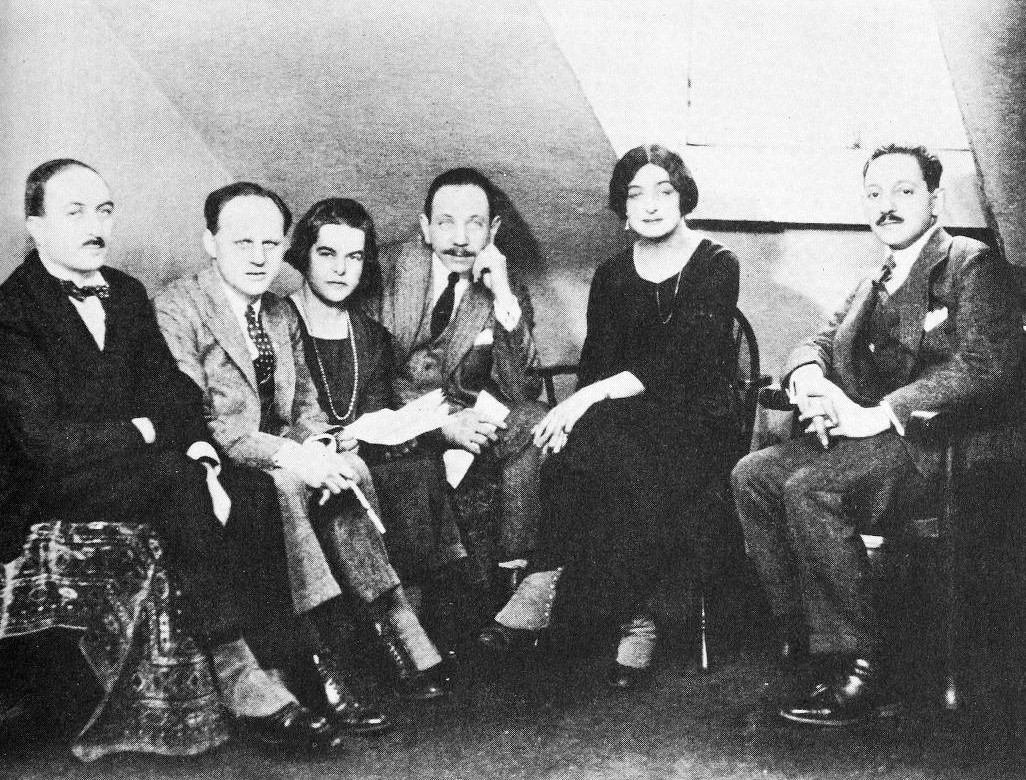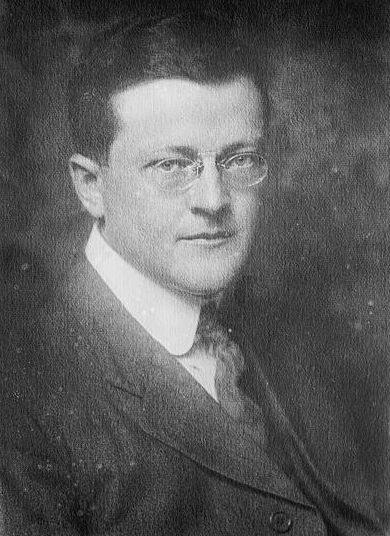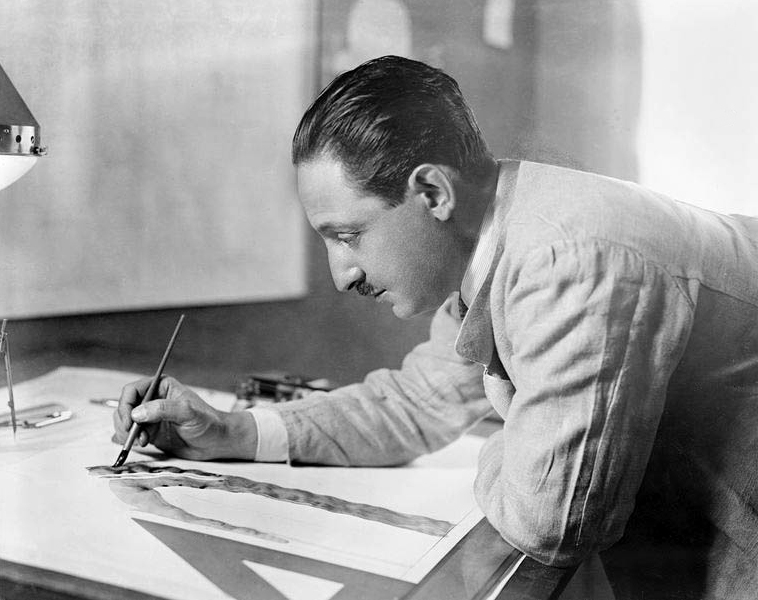|
Molière (play)
''Molière'' is a 1919 play written by Philip Moeller, who subtitled it "A Romantic Play in Three Acts". It has a medium-sized cast, moderate pacing, and two sets; Acts I and III share the same set. Some of the play's characters are historical, figures from the French court of the 1670s. The first two acts have a single scene, while the third has a curtain drop to signal the passage of two hours time. The play shows a few scenes from the twilight of Molière, as he loses the favor of Louis XIV but retains his independence. The play has an atypical approach for Moeller, who usually wrote historical satires that some critics said verged on burlesque. Also unusual was Moeller's reduced involvement with the original production. At the time he was wrapped up with staging the first Theatre Guild productions. Instead, ''Molière'' was shaped for the stage by producer-director Henry Miller, who also played the eponymous lead. Moeller acknowledged Miller's creative contribution in the dedi ... [...More Info...] [...Related Items...] OR: [Wikipedia] [Google] [Baidu] |
Philip Moeller
Philip Moeller (26 August 1880 – 26 April 1958) was an American stage producer and director, playwright and screenwriter, born in New York where he helped found the short-lived Washington Square Players and then with Lawrence Langner and Helen Westley founded the Theatre Guild. He was educated at New York University and Columbia University. Directing career Among plays he directed for the Theatre Guild were: *''R.U.R.'' (1922) *''The Adding Machine'' (1923) *''The Guardsman'' (1924) *'' They Knew What They Wanted'' (1924) *''Ned McCobb's Daughter'' (1926) *''The Second Man'' (1927) *''Strange Interlude'' (1928) *''Meteor'' (1929) *''Dynamo'' (1929) *''Hotel Universe'' (1930) *''Elizabeth the Queen'' (1930) *''Mourning Becomes Electra'' (1931 - its first production) *''Biography'' by S. N. Behrman (1932) *''Ah, Wilderness!'' (1933) *''End of Summer'' (1936) Playwright *''The Battlefield'' (1913) presented May 14, 1913 at the Aerial Theatre, on the roof of the New Amsterdam ... [...More Info...] [...Related Items...] OR: [Wikipedia] [Google] [Baidu] |
Blanche Bates
Blanche Bates (August 25, 1873 – December 25, 1941) was an American actress. Early years Bates was born in Portland, Oregon, while her parents (both of whom were actors) were on a road tour. As an infant, she traveled with them on a tour of Australia before they returned to live in San Francisco. When Bates was a girl, she wanted to be a teacher, a goal that she achieved by becoming a kindergarten teacher in San Francisco. Her career changed, however, after she took a small part in a Stockwell Stock Company production in which her mother was appearing in San Francisco. Career Bates made her début in San Francisco in a benefit performance of Brander Matthews's ''This Picture and That''. Among her early successes were her Mrs. Hillary in ''The Senator'', Phyllis in ''The Charity Ball'', and Nora in ''A Doll's House''. She joined Daly's company in 1898 and, the next year at Daly's Theatre in New York, played Mirtza in ''The Great Ruby''. For the summer of 1900 Bates ... [...More Info...] [...Related Items...] OR: [Wikipedia] [Google] [Baidu] |
John Corbin
John Corbin (May 2, 1870 – August 30, 1959) was an American dramatic critic and author. Career overview John Corbin was born in Chicago and educated at Harvard Harvard University is a private Ivy League research university in Cambridge, Massachusetts. Founded in 1636 as Harvard College and named for its first benefactor, the Puritan clergyman John Harvard, it is the oldest institution of higher le ..., where he was awarded the George B. Sohier Prize for literature. After his graduation from Harvard, Corbin soon became an established writer in New York City. From 1897 to 1900 he was an assistant editor of ''Harper's Magazine'', during part of this time acting also as dramatic critic for ''Harper's Weekly''; in 1902 he wrote the dramatic notices of ''The New York Times'' and in 1905-07 those of the ''New York Sun (historical), Sun''. From 1908 to 1910 he was literary manager of Century Theatre (New York City), The New Theatre, during the short life of which his effor ... [...More Info...] [...Related Items...] OR: [Wikipedia] [Google] [Baidu] |
The Sun (New York City)
''The Sun'' was a New York newspaper published from 1833 until 1950. It was considered a serious paper, like the city's two more successful broadsheets, ''The New York Times'' and the ''New York Herald Tribune''. The Sun was the first successful penny daily newspaper in the United States and the first one to hire a Police reporter. It was also, for a time, the most successful newspaper in America. ''The Sun'' is well-known for publishing the Great Moon Hoax of 1835, as well as Francis Pharcellus Church's 1897 editorial, containing the line "Yes, Virginia, there is a Santa Claus". History In New York, ''The Sun'' began publication on September 3, 1833, as a morning newspaper edited by Benjamin Day (1810–1889), with the slogan "It Shines for All". It cost only one penny (equivalent to ¢ in ), was easy to carry, and had illustrations and crime reporting popular with working-class readers. It inspired a new genre across the nation, known as the penny press, which made the ... [...More Info...] [...Related Items...] OR: [Wikipedia] [Google] [Baidu] |
Madame Sand
''Madame Sand'' is a 1917 play written by Philip Moeller, who subtitled it "a biographical comedy". It consists of three acts, with a medium-sized cast and moderate pacing. Most of the play's characters are historical, figures from the Romantic literary and musical world of the 1830s. Each act has only one scene and one setting. The subject is an episodic treatment of three love affairs conducted by George Sand, with Alfred de Musset, Pietro Pagello, and Frédéric Chopin. The play was long on witty conversations and irony. Intended as mild satire, some critics labelled it as burlesque, while others pointed out the limited appeal of Romantic era writers for modern audiences. "Who reads George Sand anymore?" one critic quoted. Moeller used the characters' own writings as source material, though he wasn't above lifting a phrase from elsewhere and ascribing it to one of his figures. Very much a star vehicle, the play's appeal in actual performance relies on the popularity of the s ... [...More Info...] [...Related Items...] OR: [Wikipedia] [Google] [Baidu] |
Heywood Broun
Heywood Campbell Broun Jr. (; December 7, 1888 – December 18, 1939) was an American journalist. He worked as a sportswriter, newspaper columnist, and editor in New York City. He founded the American Newspaper Guild, later known as The Newspaper Guild and now as The NewsGuild-CWA. Born in Brooklyn, New York, he is best remembered for his writing on social issues and his championing of the underdog. He believed that journalists could help right wrongs, especially social ills. Career Broun was born in Brooklyn, the third of four children born to Heywood C. Broun and Henrietta Marie (née Brose) Broun. Broun attended Harvard University, but did not earn a degree. He began his professional career writing baseball stories in the sports section of the ''New York Morning Telegraph''. Broun worked at the ''New York Tribune'' from 1912 to 1921, rising to drama critic. He started working in 1921 for the ''New York World.'' While at the ''World,'' he started writing his syndicated colum ... [...More Info...] [...Related Items...] OR: [Wikipedia] [Google] [Baidu] |
Klaw And Erlanger
Klaw and Erlanger was an entertainment management and production partnership of Marc Klaw and Abraham Lincoln Erlanger based in New York City from 1888 through 1919. While running their own considerable and multi-faceted theatrical businesses on Broadway, they were key figures in the Theatrical Syndicate, the lucrative booking monopoly for first-class legitimate theaters nationwide. Klaw and Erlanger joined in partnership in 1888. Starting from the purchase of an existing booking agency, the partners gradually gained control of the southern territory, anchored in New Orleans. They ran allied businesses, produced Broadway shows, and owned a number of theaters. They were part owners of the new Iroquois Theater in Chicago, which suffered a catastrophic fire in 1903 that resulted in more than 600 deaths and brought Klaw & Erlanger bitter criticism. In the same year they opened their flagship New Amsterdam Theater in New York, where the Aerial Gardens became the longtime stage ... [...More Info...] [...Related Items...] OR: [Wikipedia] [Google] [Baidu] |
Henry Miller's Theater
The Stephen Sondheim Theatre, formerly Henry Miller's Theatre, is a Broadway theater at 124 West 43rd Street in the Theater District of Midtown Manhattan in New York City. Owned by the Durst Organization and managed by the Roundabout Theatre Company, the modern 1,055-seat theater opened in 2009 at the base of the Bank of America Tower. The current theater is mostly underground and was designed by Cookfox, architects of the Bank of America Tower. It retains the landmarked facade of the original Henry Miller's Theatre, which was built in 1918 by Henry Miller, the actor and producer. The original theater was designed in the neoclassical style by architects Paul R. Allen and Ingalls & Hoffman with 950 seats. Its facade is protected as a city landmark by the New York City Landmarks Preservation Commission. It was managed by Henry Miller along with Elizabeth Milbank Anderson and Klaw & Erlanger. After Miller's death in 1926, his son Gilbert Miller took over operation. The Miller ... [...More Info...] [...Related Items...] OR: [Wikipedia] [Google] [Baidu] |
Alice Gale
Alice Gale (5 December 1858 – 27 March 1941) was an American actress. Biography Working with stock theater troupes such as the Grand Stock Company, the Girard Stock Company, and Creston Clarke's company, Gale performed on stage for four decades before making her first film, ''Sins of Men'' (1916). She appeared in 11 films between 1916 and 1919, of which only two survive. Gale was born in Philadelphia, Pennsylvania, and died in Harrisburg, Pennsylvania. Filmography * ''L'apache'' (1919) *Lost film * ''The Birth of a Race'' ( 1918) * ''Magda'' (1917) * '' Camille'' (1917) *Lost film * '' To-Day'' (1917) *Lost film * '' Heart and Soul'' (1917) *Lost film * ''Her Greatest Love'' (1917) *Lost film * '' The New York Peacock'' (1917) *Lost film * ''The Darling of Paris'' (1917) *Lost film * '' Romeo and Juliet'' (1916 Events Below, the events of the First World War have the "WWI" prefix. January * January 1 – The British Royal Army Medical Corps carries ou ... [...More Info...] [...Related Items...] OR: [Wikipedia] [Google] [Baidu] |
NYTimes
''The New York Times'' (''the Times'', ''NYT'', or the Gray Lady) is a daily newspaper based in New York City with a worldwide readership reported in 2020 to comprise a declining 840,000 paid print subscribers, and a growing 6 million paid digital subscribers. It also is a producer of popular podcasts such as '' The Daily''. Founded in 1851 by Henry Jarvis Raymond and George Jones, it was initially published by Raymond, Jones & Company. The ''Times'' has won 132 Pulitzer Prizes, the most of any newspaper, and has long been regarded as a national " newspaper of record". For print it is ranked 18th in the world by circulation and 3rd in the U.S. The paper is owned by the New York Times Company, which is publicly traded. It has been governed by the Sulzberger family since 1896, through a dual-class share structure after its shares became publicly traded. A. G. Sulzberger, the paper's publisher and the company's chairman, is the fifth generation of the family to head the p ... [...More Info...] [...Related Items...] OR: [Wikipedia] [Google] [Baidu] |
Ford's Grand Opera House
Ford's Grand Opera House was a major music venue in Baltimore, Maryland, located on West Fayette Street between North Howard and Eutaw Streets. It was founded by theatre manager John T. Ford (also the owner of infamous Ford's Theatre in Washington, D.C. where President Abraham Lincoln was assassinated, April 14, 1865) and designed by architect James J. Gifford. The opera house/theatre opened to the public on October 2, 1871, with a show that included readings from Shakespeare's ''" As You Like It"'' as well as vocal and orchestral performances. Then owned by 1950s–60s era theatre magnate Morris A. Mechanic, it closed almost 93 years later with its last Broadway show from New York City, " Something Funny Happened on the Way to the Forum" in 1964. It was replaced three years later as the prime site for Baltimore live theatre patrons with the opening in the landmark of the new downtown redevelopment project of Charles Center, the starkly modernistic "Brutalist" architecture of th ... [...More Info...] [...Related Items...] OR: [Wikipedia] [Google] [Baidu] |
Lee Simonson
Lee Simonson (June 26, 1888, New York City – January 23, 1967, Yonkers) was an American architect painter, stage setting designer. He acted as a stage set designer for the Washington Square Players (1915–1917). When it became the Theatre Guild in 1919, he became a stage setting staff of the theater. Literary works *“Skyscrapers for Art Museums” ''The American Mercury'', August 1927, pages 399-404 *"Minor Prophecies" New York, Harcourt and Brace, 1927 *"The Stage Is Set", New York, Dover Publications, 1932 *(with Theodore Komisarjevsky): "Settings and Costumes of the Modern Stage" New York Studio Productions, 1933 *Isaacs, Edith J.R., editor: "Architecture for the New Theater" Lee Simonson: "Theater Planning" New York Theater Arts, 1935 * ''Part of a lifetime: Drawings and Designs 1919-1940'', Duell, Sloan and Pearce, New York 1943 * ''The Art of Scenic Design; A Pictorial Analysis of Stage Setting and its relation to Theatrical Production'', 1950 Exhibitions *"Mod ... [...More Info...] [...Related Items...] OR: [Wikipedia] [Google] [Baidu] |



.jpg)
.jpg)
.png)
